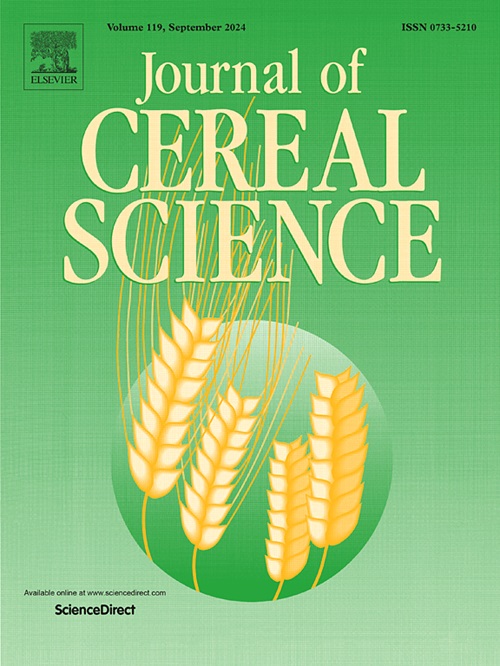Improving breadmaking quality of winter wheat using single kernel NIR protein sorting
IF 3.7
2区 农林科学
Q2 FOOD SCIENCE & TECHNOLOGY
引用次数: 0
Abstract
Near-infrared (NIR) spectroscopy predictions are routinely employed in the cereal and milling industries to ensure technological and sanitary quality. Devices capable of predicting and sorting wheat batches at the single kernel (SK) level have been developed for industrial application. This study aimed to characterize the impact of different winter wheat grades, sorted based on SK-NIR-predicted protein content, on rheological and end-use pan-bread quality. Unsorted, low, and high protein content fractions were analysed for grain, flour, dough, and bread technological quality. The results indicated a significant increase in all protein-related grading analyses, such as the Zeleny sedimentation index, flour protein content, wet gluten content, maximum torque of glutopeak, baking strength, dough water absorption, and stability, suggesting a stronger gluten network. Breadmaking trials further confirmed this impact on end-use product quality, with an increase in bread specific volume and modification of the texture profile. Pre-sorting based on protein quality grading demonstrates that higher quality breadmaking wheat should be selected for sorting to produce specialty flour while still valorizing the remains. In conclusion, SK-NIR sorting for high-protein bread-wheat production in challenging or low-input contexts is a mature technology for sustainable production and processing in the cereals industry.

利用单粒近红外蛋白分选提高冬小麦面包品质
近红外(NIR)光谱预测通常用于谷物和碾磨工业,以确保技术和卫生质量。能够在单粒(SK)水平上预测和分类小麦批次的设备已经开发用于工业应用。本研究旨在表征不同冬小麦品级对流变学和最终用途面包品质的影响,该品级基于sk - nir预测的蛋白质含量进行分类。对谷物、面粉、面团和面包的技术质量进行了未分选、低和高蛋白质含量的分析。结果表明,所有与蛋白质相关的分级分析,如Zeleny沉降指数、面粉蛋白质含量、湿面筋含量、谷顶最大扭矩、烘烤强度、面团吸水率和稳定性,均显著增加,表明面筋网络更强。面包制作试验进一步证实了这种对最终产品质量的影响,增加了面包的比体积,改变了质地轮廓。基于蛋白质质量分级的预分选表明,应选择质量较高的制面包小麦进行分选,以生产特色面粉,同时仍可使残留物增值。总之,SK-NIR分选在具有挑战性或低投入环境下用于高蛋白面包小麦生产是谷物行业可持续生产和加工的成熟技术。
本文章由计算机程序翻译,如有差异,请以英文原文为准。
求助全文
约1分钟内获得全文
求助全文
来源期刊

Journal of Cereal Science
工程技术-食品科技
CiteScore
7.80
自引率
2.60%
发文量
163
审稿时长
38 days
期刊介绍:
The Journal of Cereal Science was established in 1983 to provide an International forum for the publication of original research papers of high standing covering all aspects of cereal science related to the functional and nutritional quality of cereal grains (true cereals - members of the Poaceae family and starchy pseudocereals - members of the Amaranthaceae, Chenopodiaceae and Polygonaceae families) and their products, in relation to the cereals used. The journal also publishes concise and critical review articles appraising the status and future directions of specific areas of cereal science and short communications that present news of important advances in research. The journal aims at topicality and at providing comprehensive coverage of progress in the field.
 求助内容:
求助内容: 应助结果提醒方式:
应助结果提醒方式:


